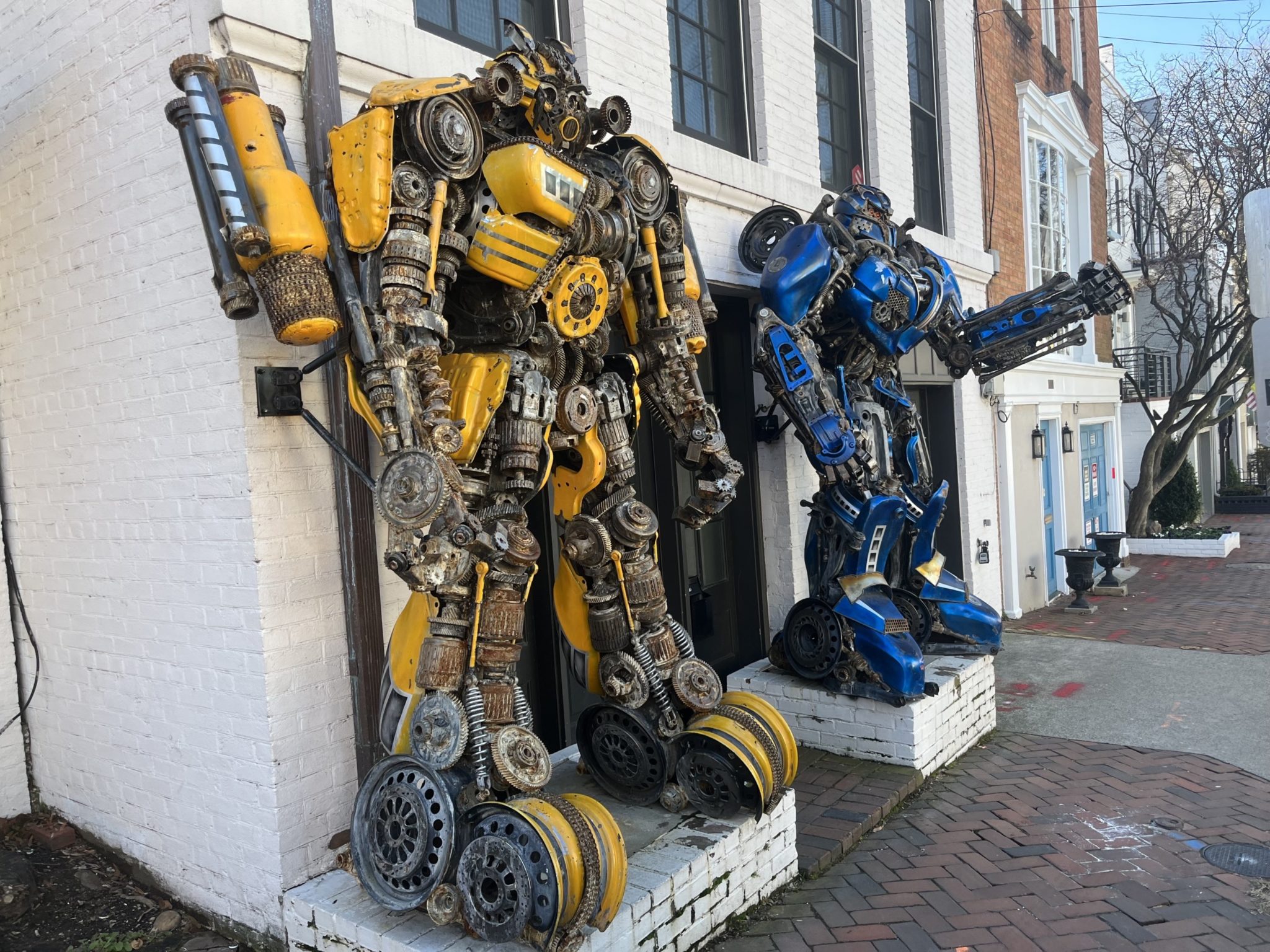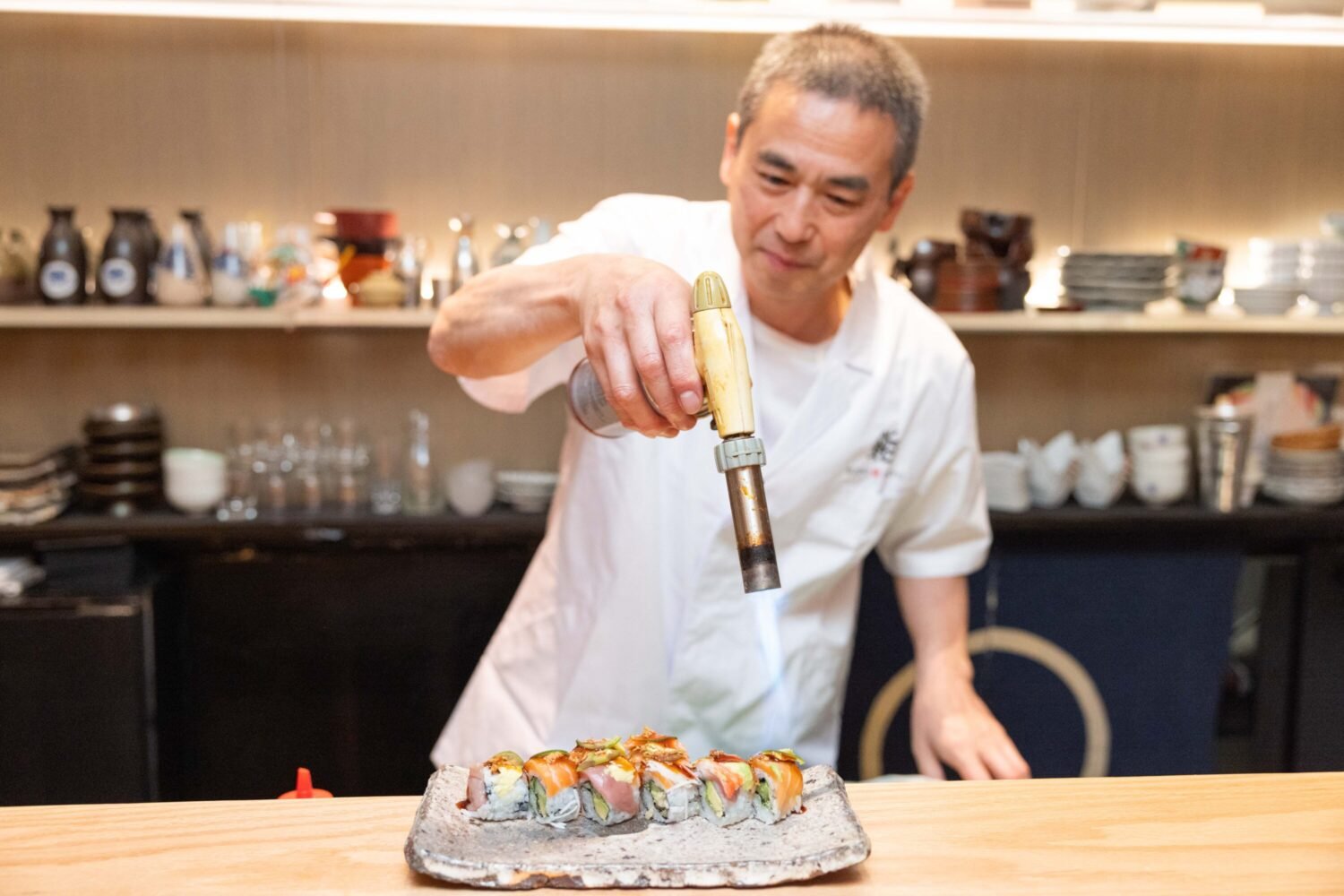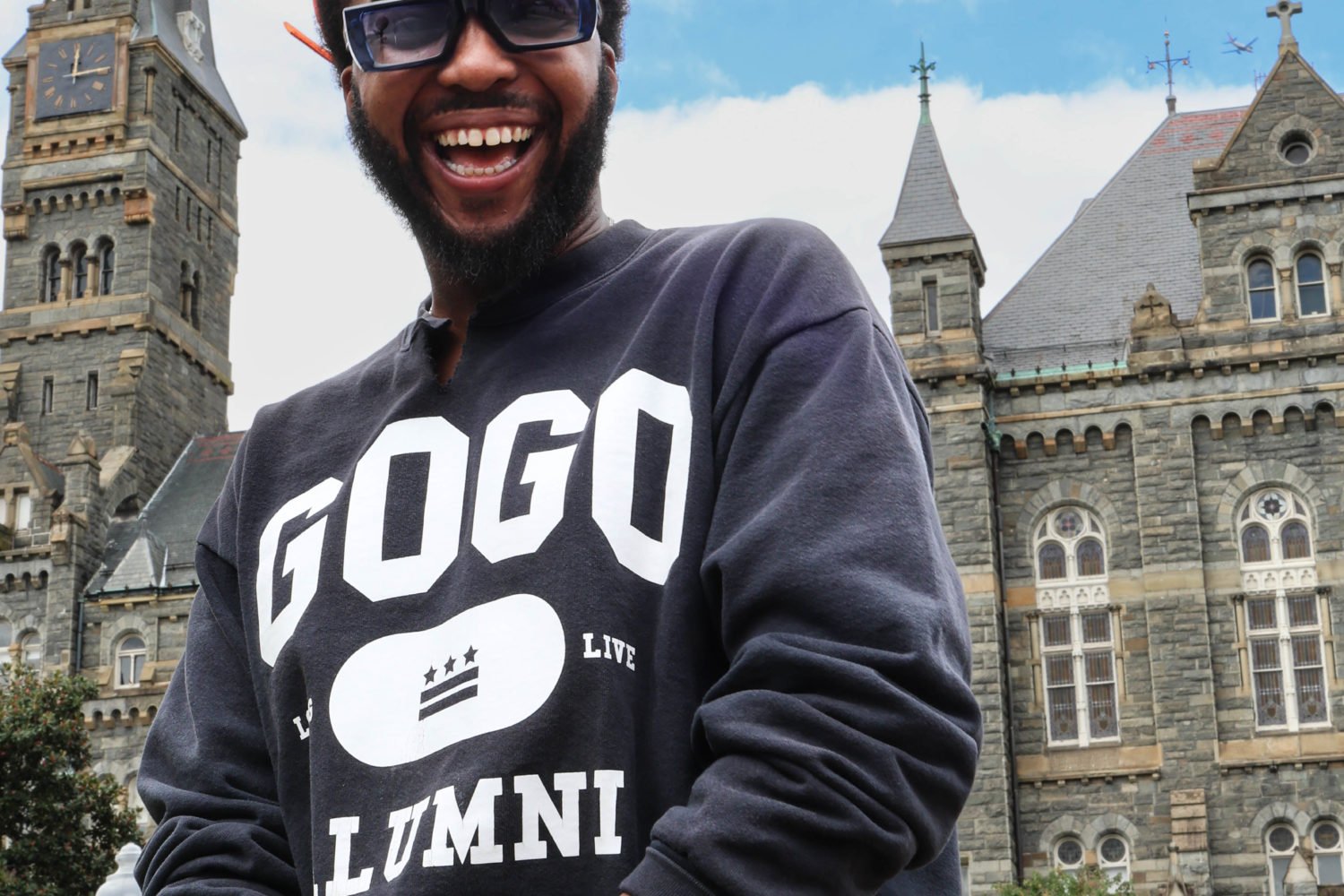On a quiet stretch of street in Georgetown, with the Rosslyn skyline looming in the background, sits DC’s unlikeliest and perhaps most controversial landmark: Optimus Prime and Bumblebee.
The two statues, depicting the iconic Transformers characters, flank the door of a Georgetown University neuroscientist’s home. And beyond attracting tourists and kids eager for a picture, they’ve found themselves at the center of neighborhood dispute spanning multiple years and government hearings.
Last year, the statues made national headlines after DC’s Public Space Commission ordered their removal. As of today, however, they’re still standing—and the ongoing fight over them has reached another level of litigation, this time in front of DC’s Office of Administrative Hearings.
Dr. Newton Howard, the professor and homeowner who installed the automatons, told Washingtonian he erected the statues as a testament to the potential cooperation of man and robot.
“It’s a message about the coalescence of machine and human, and how machines are just a friend that can help us,” said Howard, whose work focuses primarily on artificial intelligence and the computational functions of the human brain.
But whatever congenial message Howard was trying to send, it wasn’t received by some of his Georgetown neighbors, who have decried the Transformers’ potential to draw unwanted crowds to the neighborhood—as well as the fact that Howard initially installed the statues without a permit.
“The presence of these installations has exacerbated traffic congestion and illegal parking and attracted disruptive groups, compromising neighborhood safety and tranquility,” Catherine Emmerson, a spokesperson for the Prospect Street Citizen’s Association, a neighborhood group pushing for the statues to be removed, said in a statement to Washingtonian.
“It’s crucial for every community member, irrespective of their status, to follow established laws and procedures that protect the collective historical essence of Georgetown and the safety of its residents,” Emmerson added.
Emmerson said she wasn’t opposed to the statues being in Georgetown—just not on the street, where they’ve attracted unwanted groups such as crowds of bikers. Howard, for his part, told Washingtonian that “people do stop by in a tasteful way to take pictures—but not crowds.”
The first challenge to the Transformers came in 2021 through the Old Georgetown Board, an obscure three-member panel created by Congress in 1950 to preserve the neighborhood’s historic character. The board granted Howard a temporary permit, but ordered him to remove the statues by that October.
But Howard didn’t. So his neighbors appealed to the Public Space Committee, the citywide board that reviews permit applications for “the use and occupancy of the public right of way that do not fall within the regular permitting process,” according to its website. In the meantime, Howard moved the original Optimus Prime statue to his roof, replacing it with a larger statue, and augmented the Bumblebee one to match its size.
Despite testimony from the original voice actors of Optimus Prime and Bumblebee, that committee, too, would unanimously rule against Howard in May 2023. (A second appeal to the Old Georgetown Board had been rejected the month before.)
The Transformers’ fate now lies in the hands of the Office of Administrative Hearings, an administrative court that handles appeals to municipal agencies. Howard is arguing that the statues are not an infringement upon public space, as they are now part of the building’s structure.
“Very few people, if any actually get these permits for planters or little things outside their house,” Paul Strauss, Howard’s lawyer, told Washingtonian. “If the statues weren’t there, it’s not like the sidewalk would be any wider.
“The idea that, for one particular neighborhood, in the city, there’s a special board of people going back to 1950—a year when the District still had segregated schools and no home rule Government to speak of—gets to pass on what private Washingtonians do on their own private property is the ultimate federal overreach.”
Also one of DC’s two shadow senators, Strauss said he hopes to find a way to keep the statues standing, even if the court rules against his client and Optimus Prime.
“They came from another planet to save us from the evil Decepticons,” he said. “We would like for them to go through the immigration process and get their green card and become permanent residents. But even if that doesn’t happen, there’s a big difference between that and having them deported as well.”


















